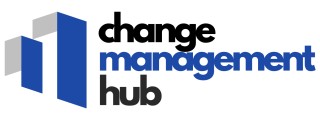
Understanding Portfolio Governance
Grasping the Concept of Portfolio Governance
Portfolio governance is a critical aspect for organizations that aim to manage their projects effectively and make strategic decisions. It involves creating a structured framework to oversee the portfolio's components, ensuring they align with the organization's strategic objectives. At this level, governance encompasses roles responsibilities, decision making processes, and the establishment of a governance framework. To manage a project portfolio successfully, understanding how portfolio components interact at different levels is crucial. Each project within the portfolio must contribute to the broader organizational strategy, making this a strategic management exercise. The process ensures that resources are allocated effectively, risks are mitigated, and the team is guided to fulfill the necessary objectives. An effective governance team is essential in this regard, as it comprises of various roles and responsibilities that drive the strategic alignment of the portfolio. They work to establish a governance project management plan, which serves as a roadmap for decision making and managing potential risks. For organizations navigating change, crafting an effective change management policy is paramount. This involves understanding governance processes and recognizing the significance of each portfolio component in meeting strategic goals. Through this holistic approach, organizations are better equipped to make informed decisions and maintain strategic alignment, ultimately enhancing the efficiency and effectiveness of their project portfolio. For more insights on crafting change management policies, explore this guide.Key Principles of Effective Portfolio Governance
Guiding Principles in Portfolio Oversight
Effective portfolio governance is a cornerstone of successful project management, ensuring that strategic objectives align with organizational goals. To achieve this, there are several guiding principles that help structure portfolio oversight and enhance decision-making processes.
- Strategic Alignment: Portfolio components must align with the broader organizational strategy. This alignment ensures that every project contributes to the overarching objectives, thereby maximizing the value generated by the portfolio.
- Defined Roles and Responsibilities: Clearly defining roles within the governance team is essential. Each team member should have explicit responsibilities, ensuring seamless communication and avoiding overlaps in duties. This structure is critical within the governance framework.
- Robust Decision-Making Processes: A well-defined process for decision making is crucial to respond effectively to changes and challenges. By having a standardized approach to decisions, the organization can ensure that choices are based on solid data and insights.
- Continuous Risk Management: Identifying and managing risks at the portfolio level is vital. Addressing risks promptly helps in mitigating adverse impacts on multiple projects, securing the portfolio's success.
- Inclusive Governance Framework: Having an inclusive governance framework allows for a holistic view of all portfolio components. It ensures that every project is assessed not only in isolation but in relation to others, providing a comprehensive view of the portfolio's landscape.
By adhering to these principles, organizations can create a governance framework that enhances portfolio management and ensures effective oversight.
To gain a deeper understanding of these concepts, consider exploring the structure and role of IT departments in aligning information technology with strategic governance.
Challenges in Implementing Portfolio Governance
Challenges in Implementing Governance Framework
The road to effective portfolio governance can be riddled with obstacles, affecting both the governance processes and the strategic decisions made by the organization. Understanding these challenges is crucial to ensure the success of the governance framework and ultimately the projects under its umbrella. One significant challenge lies in establishing a robust governance framework that aligns with the strategic objectives of the organization. This requires clear articulation of the roles and responsibilities of the governance team to ensure that every portfolio component is aligned with the organization's broader goals. Additionally, risk management is another area where difficulties may arise. The integration of risk considerations into the decision-making processes is essential to the successful governance of the project portfolio. Given the complexity of managing multiple project components at the portfolio level, it necessitates a comprehensive understanding of potential risks and determining appropriate mitigation strategies. Decision-making complexities also contribute to challenges, especially when the governance portfolio lacks a coherent decision prioritization method. Ensuring strategic alignment with organizational strategy often demands that decision processes be agile and adaptable to unforeseen challenges. Furthermore, communication barriers within the governance teams can hinder effective portfolio management. Ensuring that every governance project and decision is communicated clearly and timely across the whole organization helps streamline processes and mitigate potential misunderstandings. Additionally, maintaining a balance between innovation and strategic risk is crucial. Too much emphasis on strategic alignment might stifle creativity and innovation, vital components of any robust project management strategy. For more insights into managing risks and enhancing governance competencies during crisis conditions, read more about the dynamics of a crisis cycle in change management.Tools and Techniques for Portfolio Governance
Practical Techniques for Effective Portfolio Governance
Incorporating effective tools and techniques into your portfolio governance processes is crucial for driving strategic objectives and ensuring organizational success. A comprehensive governance framework provides the foundation for decision making at the portfolio level, supporting the effective management of all portfolio components.- Strategic Portfolio Management Tools: Utilizing sophisticated management tools allows teams to oversee project portfolios with precision, aligning initiatives with organizational strategy and strategic objectives. These tools offer insights into risk management and help in monitoring the progress of governance projects.
- Decision-Making Frameworks: Establishing a decision-making framework clarifies roles and responsibilities within the governance team. Clear role definitions enable portfolio managers to make informed decisions regarding funding, resource allocation, and potential risks.
- Effective Communication Processes: Communication is a pivotal component of successful portfolio governance. Regular updates and transparent communication channels between governance teams and stakeholders ensure all entities remain aligned with the overarching management plan.
- Risk Assessment Mechanisms: Integrating comprehensive risk assessment mechanisms within the governance portfolio aids in identifying potential project risks early and mitigating them. These processes are integral to maintaining the integrity and reliability of the project portfolio.
- Regular Audits and Reviews: Conducting consistent audits and reviews of the project portfolio allows organizations to recalibrate their strategies as needed, ensuring continuous alignment with changing business environments.
The Role of Leadership in Portfolio Governance
Leadership's Integral Role in Portfolio Governance
Leadership is indispensable in orchestrating effective portfolio governance within any organization. As agents of change management, leaders must adeptly direct the governance framework, ensuring that strategic decisions align with the organization's overarching objectives. An empowering governance team steered by proficient leaders ensures that the processes and decision-making mechanisms efficiently manage the portfolio components. Here are pivotal roles and responsibilities that leaders must embrace to facilitate robust portfolio governance:- Strategic Vision: Leaders need to articulate a clear strategic vision that resonates with the organizational strategy, guiding the governance team to align project portfolios with strategic objectives.
- Framework Development: Crafting a comprehensive governance framework is critical. Leaders must establish decision-making processes that provide the framework for evaluating risks and managing portfolio-level components effectively.
- Roles and Responsibilities: Clearly defined roles are crucial to ensure accountability and seamless operations. Leaders must delineate governance roles, outlining responsibilities that facilitate strategic alignment within the governance portfolio.
- Facilitating Collaboration: Collaborative efforts among the governance teams enhance project management and ensure portfolio components are handled efficiently. Leaders should foster an environment that encourages teamwork and communication.
- Continuous Monitoring: Vigilant monitoring and assessment are crucial to sustaining effective governance. Leaders must oversee the management plan, ensuring that projects align with the organizational strategy and strategic objectives are met.
Case Studies: Successful Portfolio Governance in Action
Real-World Examples of Portfolio Governance Success
In the realm of change management, mastering portfolio governance is crucial for aligning strategic objectives with project execution. Here, we explore some real-world examples where organizations have successfully implemented portfolio governance frameworks to enhance their decision-making processes and achieve strategic alignment.
Global Technology Firm: Streamlining Project Portfolio
A leading global technology firm faced challenges in managing its diverse project portfolio. By establishing a robust governance framework, the organization was able to streamline its portfolio components. The governance team played a pivotal role in ensuring that each project aligned with the company's strategic objectives. This approach not only improved decision-making but also optimized resource allocation, reducing risks associated with overlapping projects.
Healthcare Organization: Enhancing Strategic Decisions
A prominent healthcare organization implemented a comprehensive portfolio management plan to enhance its strategic decision-making capabilities. By clearly defining roles and responsibilities within the governance team, the organization ensured that all portfolio components were evaluated at the appropriate level. This governance project led to improved project management processes and better alignment with the organizational strategy, ultimately enhancing patient care and operational efficiency.
Financial Institution: Mitigating Risks through Effective Governance
In the financial sector, a major institution faced significant risks due to a lack of cohesive governance processes. By adopting a structured governance framework, the institution was able to mitigate risks effectively. The portfolio manager played a crucial role in overseeing the governance portfolio, ensuring that all projects adhered to the strategic alignment set by the organization. This approach not only minimized risks but also fostered a culture of accountability and transparency within the governance teams.
These case studies highlight the importance of effective portfolio governance in change management. By focusing on strategic alignment, clear roles, and robust governance processes, organizations can ensure that their project portfolios contribute to long-term success.













